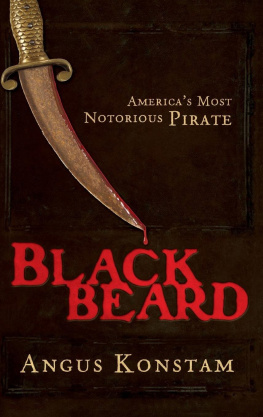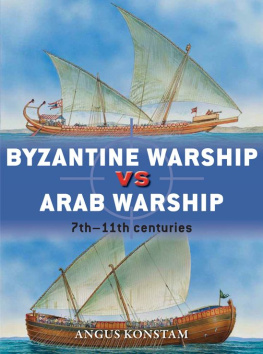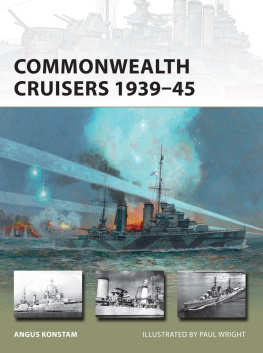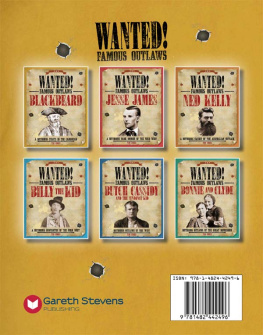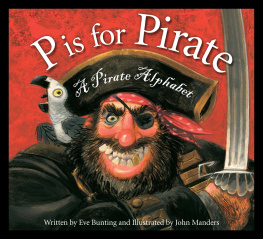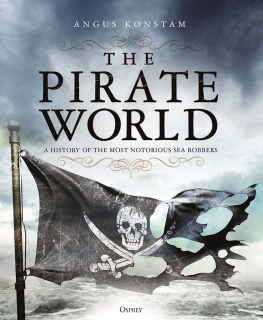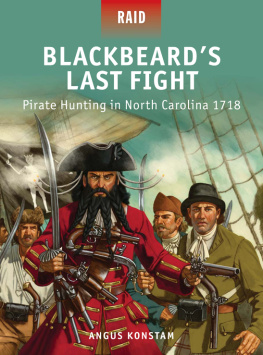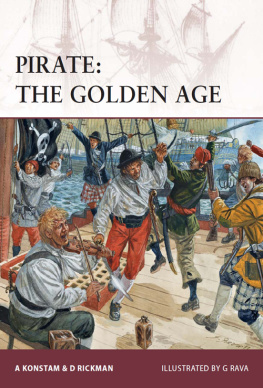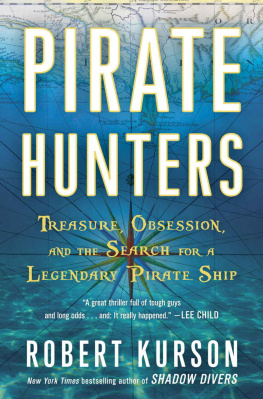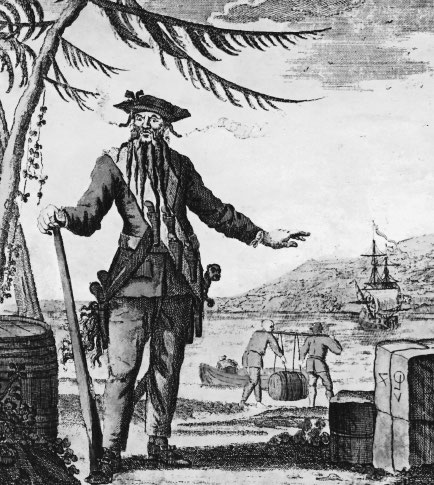BLACKBEARD
Other Works by Angus Konstam
The History of Pirates
Pirates
The Pirate Ship, 1660-1730
Pirates: Terror on the High Seas
Privateers and Pirates, 1730-1830
Elizabethan Sea Dogs
Buccaneers
Ghost Ships: Tales of Abandoned, Doomed, and Haunted Vessels
Historical Atlas of Exploration
The History of Shipwrecks
Spanish Galleon, 1530-1690
Hunt the Bismarck
Duel of the Ironclads: USS Monitor and CSS Virginia at Hampton Roads, 1862
Lepanto, 1571: The Greatest Naval Battle of the Renaissance
The Renaissance War Galley, 1470-1590
Historical Atlas of the Viking World
The Civil War: A Visual Encyclopaedia
Atlas of the Celtic World
The Spanish Armada, 1588
Atlas of Medieval Europe
BLACKBEARD
Americas Most Notorious Pirate
Angus Konstam
This book is printed on acid-free paper.
Copyright 2006 by Angus Konstam. All rights reserved
Published by John Wiley & Sons, Inc., Hoboken, New Jersey
Published simultaneously in Canada
Photo Credits: pages vi, 10, 46, 71, 105, 109, 118, 121, 158, 168, 188, 195, 235, and 292: reprinted from Captain Johnson, A General History of the Robberies and Murders of the most notorious Pirates (London, 1726, reprinted by Lyons Press, NY, 1998); pages 54 and 106: reprinted from 1725 Dutch edition of Captain Johnson, A General History of the Robberies and Murders of the most notorious Pirates; pages 37 and 140-141: Stratford Archive; page 82: Courtesy of John de Bry; page 213: Colonial Williamsburg Foundation; pages 20, 29, 65, 131, 149, 177, 204, 227, 248, 260, and 279: authors collection.
Wiley Bicentennial Logo: Richard J. Pacifico
Design and composition by Navta Associates, Inc.
No part of this publication may be reproduced, stored in a retrieval system, or transmitted in any form or by any means, electronic, mechanical, photocopying, recording, scanning, or otherwise, except as permitted under Section 107 or 108 of the 1976 United States Copyright Act, without either the prior written permission of the Publisher, or authorization through payment of the appropriate per-copy fee to the Copyright Clearance Center, 222 Rosewood Drive, Danvers, MA 01923, (978) 750-8400, fax (978) 646-8600, or on the web at www.copyright.com. Requests to the Publisher for permission should be addressed to the Permissions Department, John Wiley & Sons, Inc., 111 River Street, Hoboken, NJ 07030, (201) 748-6011, fax (201) 748-6008, or online at http://www.wiley.com/go/permissions.
Limit of Liability/Disclaimer of Warranty: While the publisher and the author have used their best efforts in preparing this book, they make no representations or warranties with respect to the accuracy or completeness of the contents of this book and specifically disclaim any implied warranties of merchantability or fitness for a particular purpose. No warranty may be created or extended by sales representatives or written sales materials. The advice and strategies contained herein may not be suitable for your situation. You should consult with a professional where appropriate. Neither the publisher nor the author shall be liable for any loss of profit or any other commercial damages, including but not limited to special, incidental, consequential, or other damages.
For general information about our other products and services, please contact our Customer Care Department within the United States at (800) 762-2974, outside the United States at (317) 572-3993 or fax (317) 572-4002.
Library of Congress Cataloging-in-Publication Data:
Konstam, Angus, date.
Blackbeard : Americas most notorious pirate / Angus Konstam.
p. cm.
Includes bibliographical references and index.
ISBN: 978-0-471-75885-3 (cloth)
ISBN: 978-0-470-12821-3 (paper)
1. Teach, Edward, d. 1718. 2. PiratesNorth CarolinaAtlantic CoastBiography. 3. Pirates-VirginiaAtlantic CoastBiography. 4. North CarolinaHistoryColonial period, ca. 16001775. 5. VirginiaHistoryColonial period, ca. 16001775. 6. Atlantic Coast (N.C.) History18th century. 7. Atlantic Coast (Va.) History18th century. I. Title.
F257.T422K66 2006
975.502092dc22
[B]
2005036438
Printed in the United States of America
10 9 8 7 6 5 4 3 2 1
Contents
Blackbeard, from an early-eighteenth-century engraving used to illustrate the 1726 version of Captain Johnsons General History.
Preface
I remember him as if it were yesterday, as he came plodding to the inn door, his sea-chest following behind him in a handbarrow; a tall, strong, heavy, nut-brown man; his tarry pigtail falling over the shoulders of his soiled blue coat; his hands ragged and scarred, with black, broken nails; and the sabre cut across one cheek, a dirty, livid white. That was how Jim Hawkins described his first encounter with a pirate in Robert Louis Stevensons Treasure Island. His description of Billy Bones could have referred to any well-traveled seaman during the Golden Age of Piracy. What made Billy Bones special was that he had once shipped with Captain Flint, the most evil, cruel, and dastardly pirate ever to sail the Seven Seas. Stevenson clearly had a role model for Flint, the bloodthirstiest buccaneer that sailed. To show just how bad Stevensons pirate was, the author added, Blackbeard was a child to Flint. When the Scottish author wrote his pirate bestseller in 1883, he understood that most readers would pick up the reference and would know who Blackbeard was.
This is hardly a surprise. In 1724, when the mysterious Captain Johnson first published his catalog of pirates, Blackbeard featured prominently among them. The early-eighteenth-century book became a bestseller, and it is still in print today, supported by countless books on pirates, ranging from academic studies to childrens fiction. In the last century it also inspired moviemakers, and in recent years the swashbuckling pirate films of the 1930s have taken a new lease on life. Johnsons description of Blackbeard could have been taken straight from the actors notes for Pirates of the Caribbean: In time of Action, he wore a Sling over his Shoulders, with three brace of Pistols, hanging from Holsters like Bandaliers; he wore a Fur-Cap, and stuck a lighted Match on each Side, under it, which appearing on each side of his Face, his Eyes naturally looking Fierce and Wild, made him altogether such a Figure, that Imagination cannot form an idea of a Fury, from hell, to look more frightful.
It is ironic that today, while few people remember the names of the other characters in this story, such as Alexander Spotswood, they know about Blackbeard. Charles Eden, Ellis Brand, Robert Maynard, and Tobias Knight have all but faded from the pages of history, while even Woodes Rogers is a name almost unknown outside the ranks of pirate aficionados. Blackbeards contemporaries, such as Benjamin Hornigold, Charles Vane, Stede Bonnet, and Henry Jennings, never managed to capture the public imagination, while Calico Jack Rackam is only remembered through his association with the far more sensational female pirates in his crew, Anne Bonny and Mary Reade.
Other pirates were more successful than Blackbeard. Henry Every captured a ship filled with the treasures of an Indian prince, and retired to tell the tale. Bartholomew Roberts was arguably the most successful occidental pirate of them all, capturing more than five times the prizes secured by Blackbeard or any other pirate of the Golden Age. However, it was Blackbeard who caught the public imagination and who remains our archetypal pirate of the era. The reason for this may be attributed to his appearance, which was highly distinctive, and fit the image the general public had of pirates of this time. In a large proportion of the pirate books out there on the shelves, Blackbeard features on the coveran instantly recognizable figure who screams ferocious pirate to whoever picks up the book. In the public imagination, Blackbeard is the ultimate pirate captain, regardless of what he actually did during his short, brutish career.

